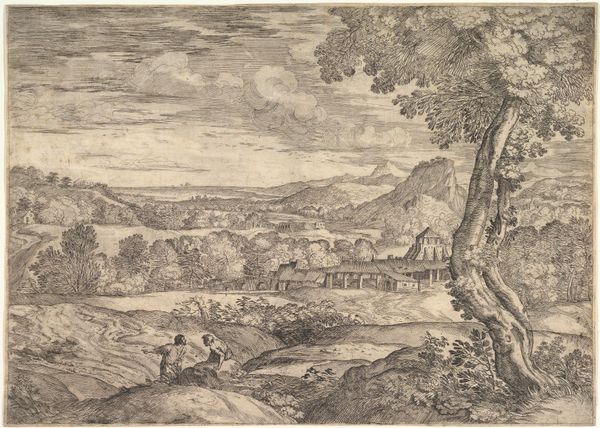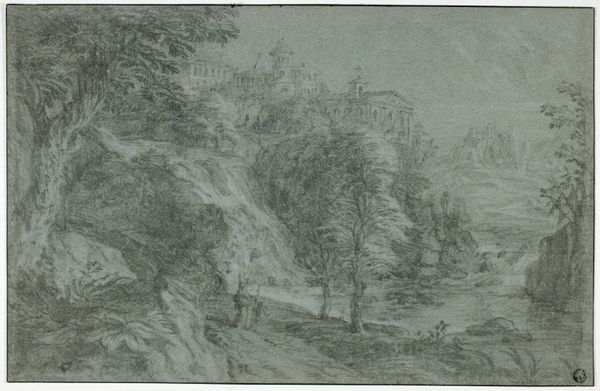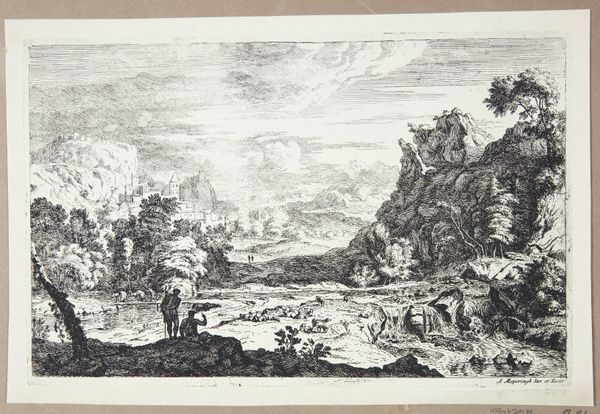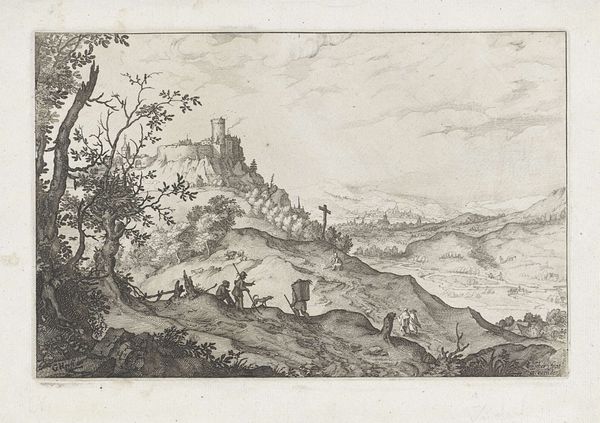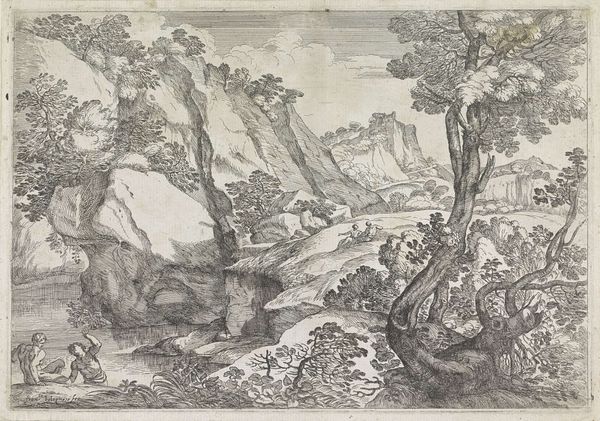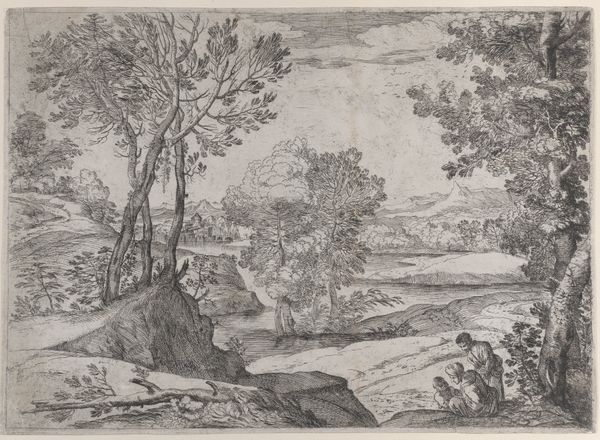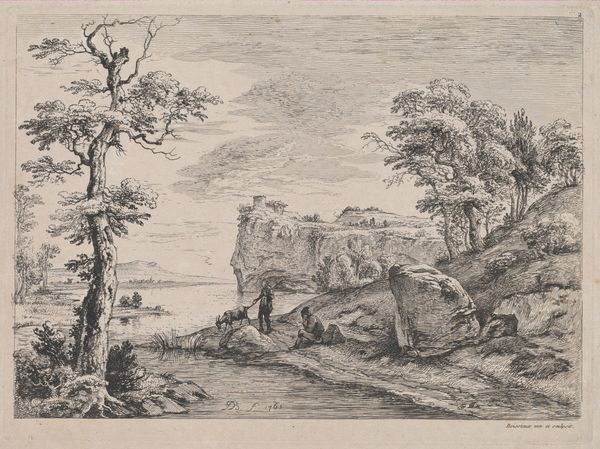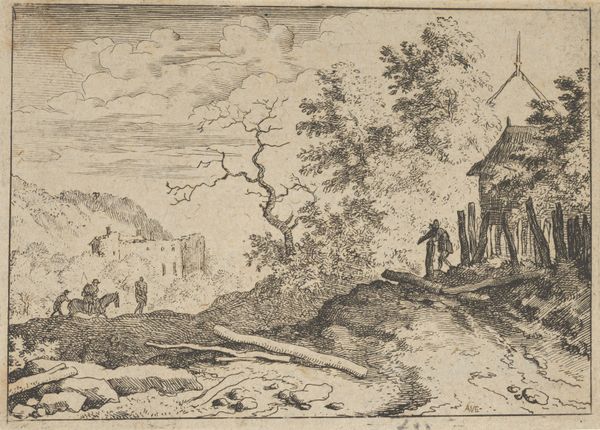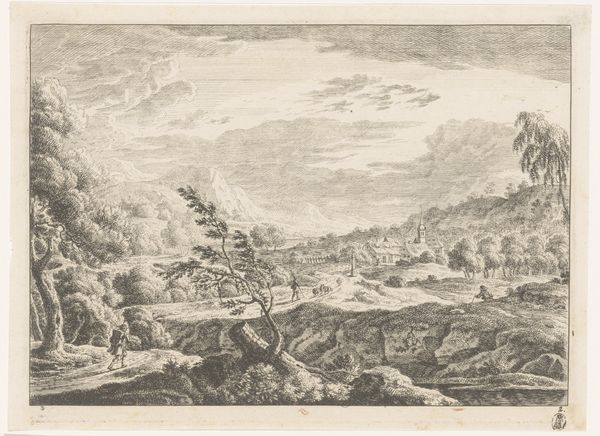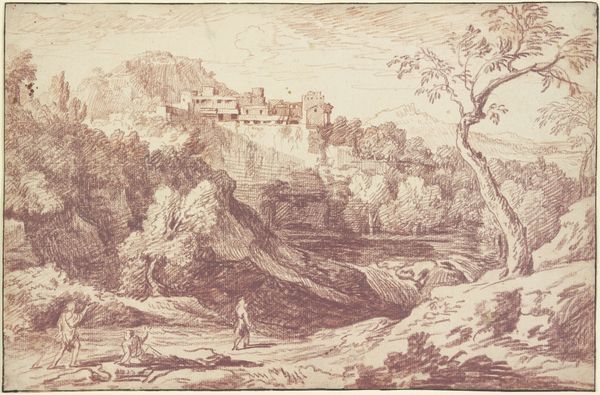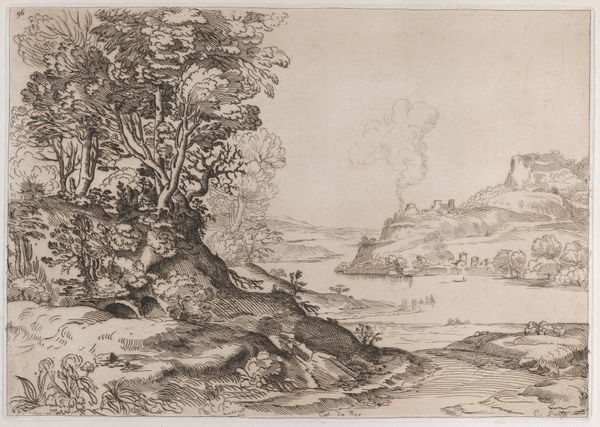
Mountain Landscape with Figures and Buildings 1780s
0:00
0:00
Dimensions: Sheet: 10 5/16 × 15 15/16 in. (26.2 × 40.5 cm)
Copyright: Public Domain
Editor: We're looking at "Mountain Landscape with Figures and Buildings," a drawing made in the 1780s by Thomas Gainsborough, rendered in pencil and charcoal. The sweeping landscape almost feels theatrical, like a backdrop. What do you see in this piece, considering the time it was made? Curator: Gainsborough, while known for his portraits that served the aristocracy, engaged here with landscape in a manner that reflects the burgeoning Romantic movement. Look at the rugged mountains, the seemingly ancient buildings – they evoke a sense of sublime grandeur and perhaps even a yearning for a pre-industrial past. This idealized vision served specific social and political functions. Editor: How so? Was it simply about aesthetic escapism? Curator: Not entirely. These images coincided with the rise of landscape as a subject deemed worthy of high art and the growing public interest in picturesque views, a form of tourism consumed in ways very similar to consuming art. Simultaneously, it could also be read as a reaction to rapid urbanization, with the elite reasserting their connection to an idealized, rural England and their feudal roles, through controlling both the land and its image. Editor: That's a perspective I hadn't considered. It goes beyond just a pretty picture to reveal power structures. Does the use of pencil and charcoal contribute to this reading? Curator: Absolutely. The medium makes it seem like a sketch, suggestive of immediacy, of an artist capturing the 'raw' beauty of nature. However, this ‘naturalness’ is, of course, carefully constructed, feeding into the era’s specific understanding of aesthetic value shaped by class. It is both representation and constructed ideal. Editor: It's fascinating how a landscape drawing can be so intricately tied to social and political forces. Thanks, I see this work in a completely different light now. Curator: And that’s the power of understanding the historical currents shaping the creation and reception of art. There's always a bigger picture.
Comments
No comments
Be the first to comment and join the conversation on the ultimate creative platform.

